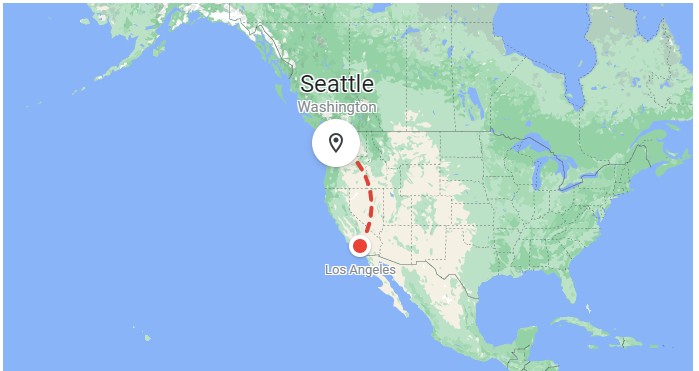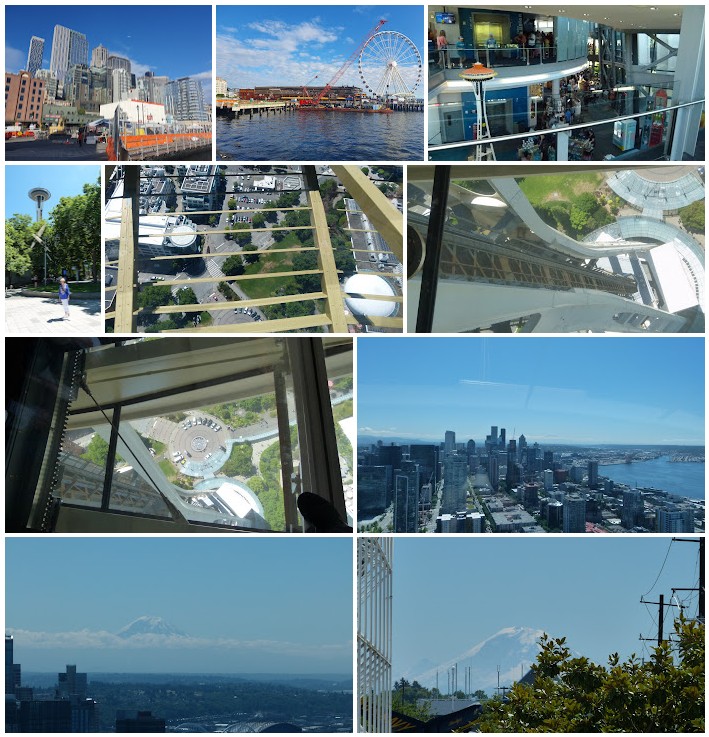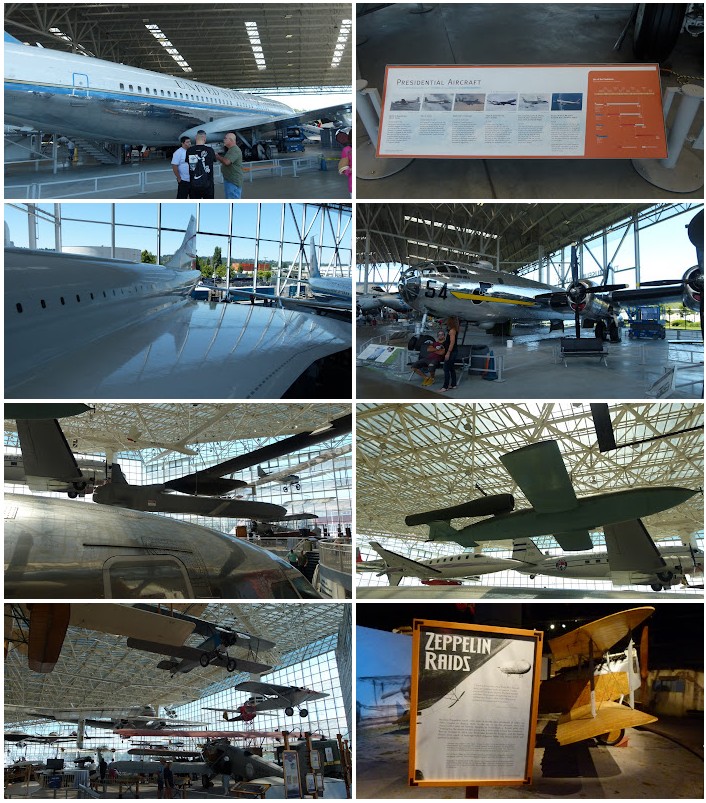
Here we are in Seattle. And what else does one do in Seattle? Why, visit the iconic Space Needle and go out to the Boeing plant and the Museum of Flight.
The Space Needle, built for the 'Seattle World Fair' in 1962, was briefly the tallest structure west of the Mississippi. Now, its height is unremarkable, it's shorter, even, than Sydney's Centrepoint Tower.
Initially we couldnt see it, it was hidden behind the city's many office towers. But it does have a thrilling glass floor that rotates like the restaurant at Centrepoint in Sydney. Indeed, this floor was once opaque, it was a restaurant too.
Of course, once you are above a hundred or so metres acrophobia kicks-in, so the adrenaline thrill, for those not yet accustomed to the appearance of nothing beneath their feet, is just as potent, as the squeals, from some, and white faces, on others, attest. In this respect, this glass floor is just as scary, as the glass floor areas at the Tokyo Tower, not to mention the very much higher outward leaning walls at the Willis Tower, in Chicago.
'The Space Needle' was constructed at the height of the 'space-race', that began a decade earlier. Its unique shape came to symbolise the era, referenced in the 'Jetsons' TV show.
 Looming over the southern horizon is Mount Rainier (Tahoma) an active stratovolcano
Looming over the southern horizon is Mount Rainier (Tahoma) an active stratovolcano
Its peak is 4.4 kilometres above sea level - and like other large 'free standing' mountains it's truly impressive
The 'space-race' had began with the Russian 'Sputnik' satellite in 1952; followed by Laika in 1957, the first dog in space, on Sputnik 2. The USSR then leapt ahead in 1961 when Yuri Gagarin, became the first Cosmonaut.
The American program, initially based on the German V-2 rocket, and directed by ex-Nazi, Wernher Von Braun, had faltered from one disaster to another, until 1962 when newly elected President Kennedy, who had been critical of the program in opposition, declared that the goal was now to: "walk on the Moon by the end of the decade". America just made it in time, with that "one small step for (a) man...", in July 1969.
Of course, the real concern was mutually assured destruction. Space supremacy was essential in the event of nuclear war. How else could we wipe out those Ruskies, before they got us?
| "Once the rockets are up, who cares where they come down..." |
So, the competition with Russia continued. And now others had joined the race. For example, Australia that had shared a military rocket and atomic bomb program with the UK, launched its own satellite in 1967, using reassembled rocket components from the US and UK.
Yet, as we saw in Houston on our last trip to America, that early competition finally came to an end with cooperation; to build and staff the International Space Station.
The NASA Houston International Space Station Control Room
showing the ISS live with a Russian crew member on camera
Click on this picture to see more
On a similar theme, a little out of town, to the south, we could tell it by the mountain, is the Museum of Flight. This houses an amazing collection of historic aircraft from many countries, both allied and combatant, as many are military. There are also many commercial aircraft, mainly from the Boeing stable, including an old Air Force One. They also have a supersonic Aérospatiale/BAC Concorde that, like many of the aircraft here, is open for inspection. Very interesting.
 Of special interest was the collection of pilotless aircraft, beginning with the German V1 'buzzbomb'
Of special interest was the collection of pilotless aircraft, beginning with the German V1 'buzzbomb'
with other examples, through to the present generation of US drones.
These have remote pilots. But now onboard AI is making them semi of fully autonomous.
It's easy to predict that most military aircraft will soon be pilotless, because a huge proportion of their cost;
and major limit on their manoeuvrability; is just to keep their encapsulated human alive.
To get to Vancouver we caught the bus. The international bus terminal is conveniently connected with the metro, in turn to our hotel, where it was most useful and convenient.
